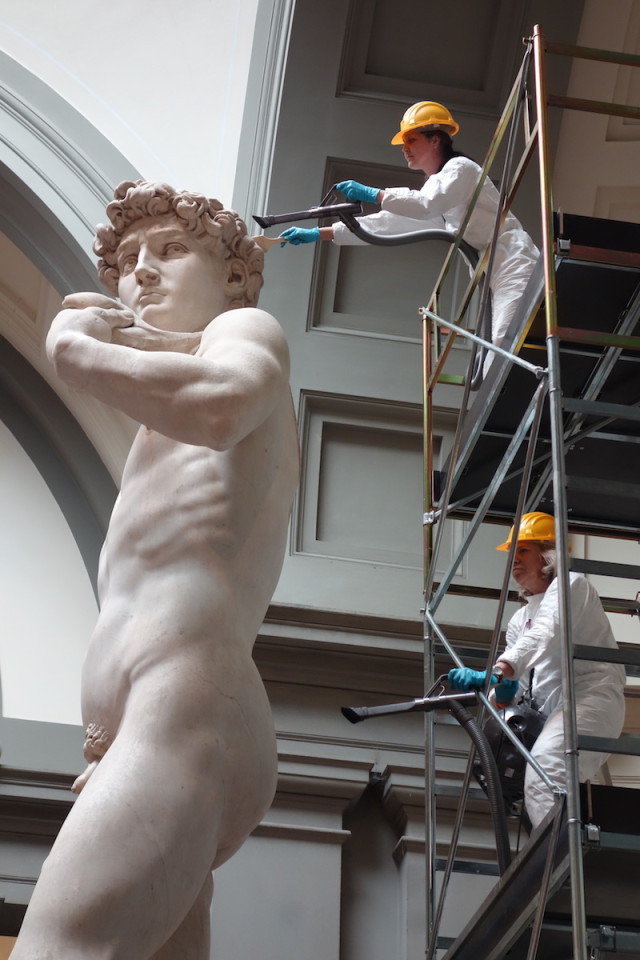
THE DAILY PIC (#1501): So yesterday morning, the 1,500th edition of this column featured a High Renaissance miracle by Raphael … and then within an hour or two I’d received this amazing photograph of that work’s most important competition, from Michelangelo. Yesterday apparently marked the beginning of a new “spring cleaning” of his David, funded by the Friends of Florence Foundation.
This photo gets at something very important about the David, when seen in the flesh in the Accademia gallery in Florence, which gets lost in all the photos and copies that normally stand in for the sculpture: It is … YUGE. (Sorry, couldn’t resist the Trumpism.) Which means the most common cliché uttered about it – that it restores the natural or normative human proportions of ancient art – is pretty much wrong. When was the last time any of us saw a real person who was 17 feet tall? In fact, when it was first completed, the Florentines referred to the sculpture as The Giant. The young Michelangelo must have been thinking about the famous colossi of the ancient world, and of the amazing, lost grandeur of antiquity, rather than about that culture’s so-called “humanism”. (A useless and confusing term that should be banned, IMHO!)
I’m also interested in how Michelangelo manages to use sheer scale to make two opposites collide in this work: The humility of David, the “humble” shepherd with his modest weapon, and his oversize status as slayer of Goliath and then King of the Jews. Does that collision mean that Michelangelo’s figure also stands for Christ, humble carpenter, shepherd of us all and then conqueror of everything? The David-Christ parallel was certainly a common notion in Michelangelo’s era; what’s amazing is how his sculpture (literally) bodies it forth.
Or maybe Michelangelo doesn’t deserve the credit for all this aesthetic magic. Reading a nice new summary of the David‘s early history in the London Review of Books, I discovered that he originally carved his statue to be placed many stories up on the Florentine Duomo, where it would not have looked particularly big. It was the people of Florence who decided to keep their amazing new sculpture down at street level, so it could tower above them. (An extraordinary document records all the great artists of the time, including Leonardo da Vinci and Botticelli, discussing where to site it.) Art always gets its meaning as much from the people seeing it as from the person who made it. In the case of the David, the people may have seen truer than the maker. Michelangelo made a big sculpture, but his audience was responsible for turning it into a giant.
For a full survey of past Daily Pics visit blakegopnik.com/archive.